BIBLICAL STORIES by Numiscollect
A few of the European independent coin producers have long-term series in their portfolio and Dutch producer Numiscollect is no exception. One of the most popular formats of choice is the fractional sterling silver one, as used by CIT for its perennial Mountains and Flora, World of Hunting and World of Wonder series. This series, which looks at famous stories in the bible, is one such beast.
Biblical Stories debuted in 2011 with a pair of 15.5g (½oz) coins, released packaged singly, and to date is still going strong with twelve designs now available. The release schedule is variable, although at least one coin has launched every year. The last couple of years has seen two-annual releases, and it’s likely that will be the norm moving forward. The silver used has a fineness of 0.925 (92.5%), often called sterling silver. For the 2017 coin the silver was changed to fine 0.999 and we expect that to continue as it has done for 2018.
Each coin is clean-struck, full of detail, and depicting one of the iconic scenes from the most popular book in history, the Bible. The only modification to the reverse face, one that has become a signature feature of the range, is a small area with coloured enamel applied. Each release is full of multiple design elements, especially the more recent ones, and one of these, different in every case, is chosen to be highlighted. There’s no set colour being used, with each release highlighted in the most logical colour – yellow for a sun, blue for water etc. In no case is the colour heavily or inappropriately applied, the choices are sympathetic to the overall look without overpowering it. There are some excellent designs in this series, Noahs Ark and Jonah being fine examples.
The series shares a common obverse design, that of the issuing state the Republic of Palau, one widely used in modern commemorative numismatics. Numiscollect have gone further than just using a straight emblem however. The design is basically a coin within a coin. This sits above an open book, no doubt the Bible, itself set in the centre of radiating lines meant to represent light. The series title ‘BIBLICAL STORIES’ is inscribed around the rim at the bottom. A true common obverse, the date is on the reverse face, so this one has no need to change every coin.
Packaging extends to a coin box inside a coloured outer shipper. A Certificate of Authenticity is enclosed. At the time of writing, these coins are selling around the €65-75 Euro mark. The mintage of each coin is fixed at 1,000 units. There have been some variant releases which you can read about further down, but these occur within the 1,000 mintage limit and are not in addition to. At fourteen coins and counting, this clearly popular range will surely have further entrants to come and as usual, we’ll keep this guide updated to reflect them.
2018 David and Goliath
Goliath of Gath (one of five city-states of the Philistines) was the Biblical warrior defeated by the young David in the Book of Samuel. Post-Classical Jewish traditions stressed his status as the representative of paganism, in contrast to David, the champion of the God of Israel. Christian tradition sees David’s battle with Goliath the victory of God’s king over the enemies of God’s helpless people as a prefiguring of Jesus’ victory over sin on the cross and the Church’s victory over Satan.
The phrase “David and Goliath” (or “David versus Goliath”) has taken on a more popular meaning, denoting an underdog situation, a contest where a smaller, weaker opponent faces a much bigger, stronger adversary.
DESIGN: Depicting David throwing a black stone at the attacking Goliath with an army in the background.
ENAMEL: The rock being thrown by David is coloured black.
2017 Daniel in the Lions Den
Daniel is raised to high office by his royal master Darius the Mede. Daniel’s jealous rivals trick Darius into issuing a decree that for thirty days no prayers should be addressed to any god or man but Darius himself; any who break this are to be thrown to the lions. Daniel continues to pray to the God of Israel, and the king, although deeply distressed, must condemn Daniel to death, for the edicts of the Medes and Persians cannot be altered. Hoping for Daniel’s deliverance, he has him cast into the pit.
At daybreak the king hurries to the place and cries out anxiously, asking if God had saved his friend. Daniel replies that his God had sent an angel to close the jaws of the lions, “because I was found blameless before him.” The king commands that those who had conspired against Daniel should be thrown to the lions in his place, along with their wives and children, and writes to all the people of the whole world commanding that all should tremble and fear before the God of Daniel.
DESIGN: Depicts a rendition of elements of Sir Peter Paul Rubens painting of the scene, completed in 1615. The original background is replaced with a view of Babylon. The painting is now in the National Gallery of Art in Washington DC.
ENAMEL: At the top of the reverse face is a lion with its mane highlighted in blue.
2017 Moses Crossing the Red Sea
According to the Book of Exodus, Moses was born in a time when his people, the Israelites, an enslaved minority, were increasing in numbers and the Egyptian Pharaoh was worried that they might ally themselves with Egypt’s enemies. Moses’ Hebrew mother, Jochebed, secretly hid him when the Pharaoh ordered all newborn Hebrew boys to be killed in order to reduce the population of the Israelites. Through the Pharaoh’s daughter (identified as Queen Bithia in the Midrash), the child was adopted as a foundling from the Nile river and grew up with the Egyptian royal family. After killing an Egyptian slavemaster (because the slavemaster was smiting a Hebrew to death), Moses fled across the Red Sea to Midian, where he encountered The Angel of the Lord, speaking to him from within a burning bush on Mount Horeb (which he regarded as the Mountain of God).
God sent Moses back to Egypt to demand the release of the Israelites from slavery. Moses said that he could not speak with assurance or eloquence, so God allowed Aaron, his brother, to become his spokesperson. After the Ten Plagues, Moses led the Exodus of the Israelites out of Egypt and across the Red Sea, after which they based themselves at Mount Sinai, where Moses received the Ten Commandments. After 40 years of wandering in the desert, Moses died within sight of the Promised Land.
DESIGN: Depicts Moses with his staff parting the Red Sea to create a safe passage for his people. A pair of stone tablets sits at the top containing the ten commandments. Ten small circles contain representations of the ten plagues that god is said to have set upon the Egyptians.
ENAMEL: At the top of the reverse face is a Hebrew six-pointed star in blue.
2016 Tower of Babel
The Tower of Babel is an etiological myth in the Book of Genesis of the Tanakh (Old Testament) meant to explain the origin of different languages. According to the story, a united humanity of the generations following the Great Flood, speaking a single language and migrating from the east, came to the land of Shinar. There they agreed to build a city and a tower “tall enough to reach heaven”; seeing this, God confounded their speech so that they could no longer understand each other and scattered them around the world.
The Tower of Babel has been associated with known structures according to some modern scholars, notably the Etemenanki, a ziggurat dedicated to the Mesopotamian god Marduk by Nabopolassar, king of Babylonia (c. 610 BCE). The Great Ziggurat of Babylon was 91 metres (300 ft) in height. Alexander the Great ordered it demolished circa 331 BCE in preparation for a reconstruction that his death forestalled.
DESIGN: Depicts the Tower of Babel under construction but almost complete. To the right is a Babylonian, to the left some ancient scripts (cunieform, hieroglyphic, greek etc.), meant to represent the original function of the tower.
ENAMEL: At the top of the reverse face is a cloud in light blue. A limited number in two-coin sets had a white cloud.
2016 Crucifixion of Jesus
The crucifixion of Jesus occurred during the 1st century AD, most probably between the years 30 and 33. Jesus, whom Christians believe to be the Son of God as well as the Messiah, was arrested, tried, and sentenced by Pontius Pilate to be scourged, and finally crucified by the Romans.
Jesus’ crucifixion is described in the four canonical gospels, referred to in the New Testament Epistles, attested to by other ancient sources, and is established as a historical event confirmed by non-Christian sources, although there is no consensus on the precise details of what exactly occurred. Collectively referred to as the Passion, Jesus’ suffering and redemptive death by crucifixion are the central aspects of Christian theology concerning the doctrines of salvation and atonement.
DESIGN: Depicts Mary holding the body of Jesus in her lap after he had been taken down from the cross he was crucified on. To the right is an armed Roman soldier in full military attire. To the left are small icons of the event – nails, a crown of thorns and a fish symbol.
ENAMEL: At the top of the reverse face is a radiating sun in yellow-gold.
2015 Jonah and the Whale
Jonah is the son of Amittai, and he appears in 2 Kings as a prophet from Gath-Hepher, a few miles north of Nazareth. He is therein described as being active during the reign of the second King Jeroboam (c.786–746 BC), and as predicting that Jeroboam will recover certain lost territories.
Jonah is the central character in the Book of Jonah. Commanded by God to go to the city of Nineveh to prophesy against it “for their great wickedness is come up before me,” Jonah instead seeks to flee from “the presence of the Lord” by going to Jaffa, identified as Joppa or Joppe, and sailing to Tarshish, which, geographically, is in the opposite direction. A huge storm arises and the sailors, realizing that it is no ordinary storm, cast lots and discover that Jonah is to blame. Jonah admits this and states that if he is thrown overboard, the storm will cease. The sailors try to dump as much cargo as possible before giving up, but feel forced to throw him overboard, at which point the sea calms. The sailors then offer sacrifices to God. Jonah is miraculously saved by being swallowed by a large fish in whose belly he spends three days and three nights. While in the great fish, Jonah prays to God in his affliction and commits to thanksgiving and to paying what he has vowed. God commands the fish to spew Jonah out.
God again commands Jonah to visit Nineveh and prophesy to its inhabitants. This time he goes and enters the city, crying, “In forty days Nineveh shall be overthrown.” After Jonah has walked across Nineveh, the people of Nineveh begin to believe his word and proclaim a fast. The king of Nineveh puts on sackcloth and sits in ashes, making a proclamation which decrees fasting, sackcloth, prayer, and repentance. God sees their repentant hearts and spares the city at that time. The entire city is humbled and broken with the people (and even the animals) in sackcloth and ashes. Even the king comes off his throne to repent.
DESIGN: Depicts Jonah being disgorged from the belly of a whale/sea creature and onto land. A ship sits on the sea on the horizon. Icons to the left are a fish and some stormy waves.
ENAMEL: To the left of the reverse face is a fish in dark blue.
2015 Last Supper
A new coin in the biblical stories series is dedicated to the Last Supper featuring the famous painting by Da Vinci. A great issue for Easter gifts and including a great presentation box.
The last meal that Jesus shared with his disciples is described in all four canonical Gospels. This meal later became known as the Last Supper. The Last Supper was likely a retelling of the events of the last meal of Jesus among the early Christian community, and became a ritual which recounted that meal.
DESIGN: Depicts Jesus holding a communion wafer (a Pringle?) while seated at a table. Across the middle of the coin are the disciples seated for a meal, laid out as in Da Vinci’s famous painting of the same name. To the left and right are icons associated with the life of Jesus.
ENAMEL: At the top of the reverse face is a communion wafer (we think?) in yellow.
2014 Three Holy Kings
The Magi, also referred to as the (Three) Wise Men or (Three) Kings, were, in the Gospel of Matthew and Christian tradition, a group of distinguished foreigners who visited Jesus after his birth, bearing gifts of gold, frankincense and myrrh. They are regular figures in traditional accounts of the nativity celebrations of Christmas and are an important part of Christian tradition.
According to Matthew, the only one of the four Canonical gospels to mention the Magi, they came “from the east” to worship the “king of the Jews”. Although the account does not mention the number of Magi, the three gifts has led to the widespread assumption that there were three men. In Eastern Christianity, especially the Syriac churches, the Magi often number twelve. Their identification as kings in later Christian writings is probably linked to Psalms 72:11, “May all kings fall down before him”.
DESIGN: Depicts Jesus being held by Mary and surrounded by the three magi of legend. To the left are small icons representing the three gifts, to the right, three men on camels. In the background is the moon with a shooting star going across it.
ENAMEL: At the top of the reverse face is a shooting star in yellow-gold.
2014 Resurrection of Jesus
The Resurrection of Jesus is the Christian belief that Jesus Christ miraculously returned to life on the Sunday following the Friday on which he was executed by crucifixion. It is the central tenet of Christian faith and theology and part of the Nicene Creed: “On the third day he rose again in accordance with the Scriptures”.
In the New Testament, after the Romans crucify Jesus, he is anointed and buried in a new tomb by Joseph of Arimathea but God raises him from the dead and he appears to many people over a span of forty days before his ascension to Heaven, to sit at the Right Hand of God. Christians celebrate the resurrection of Jesus on Easter Sunday, the third day after Good Friday, the day of his crucifixion. Easter’s date corresponds roughly with Passover, the Jewish observance associated with the Exodus, that is fixed for the night of the Full moon near the time of the spring equinox.
DESIGN: Depicts Jesus standing in the air with clouds behind, while underneath stand many onlookers in admiration. To the right is a small bas-relief portrait of Jesus, alongside six eggs. To the right is a dove in flight.
ENAMEL: To the right of the reverse face is a dove in flight, highlighted in white.
2013 Noah’s Ark
Noah’s Ark is the vessel in the Genesis flood narrative (Genesis chapters 6–9) by which the Patriarch Noah saves himself, his family, and a remnant of all the world’s animals when God decides to destroy the world because of mankind’s evil deeds. God gives Noah detailed instructions for building the ark: it is to be of gopher wood, smeared inside and out with pitch, with three decks and internal compartments; it will be 300 cubits long, 50 wide, and 30 high (450 × 75 × 45 ft or 137 × 22.9 × 13.7 m); it will have a roof “finished to a cubit upward”, and an entrance on the side. It had three internal divisions (which are not actually called “decks”, although presumably this is what is intended).
It is made of “gopher” wood, a word which does not appear elsewhere in the entire Bible, and is divided into qinnim, a word which always refers to birds’ nests elsewhere, leading some scholars to amend this to qanim (reeds), the material used for the boat of Atrahasis, the Babylonian flood-hero. God instructs Noah to kapar (smear) the ark with koper (pitch): in Hebrew the first of these words is a verb formed from the second and, like “gopher”, it is a word found nowhere else in the Bible.
Noah is instructed to take on board his wife, his three sons, and his sons’ wives. He is also to take two of every living thing, and seven pairs of every clean creature and of every bird, together with sufficient food.
DESIGN: Depicts Noah releasing a dove to find land to the left of the coin face. The rest is filled with an image of the ark unloading its cargo of animals as the waters recede.
ENAMEL: At the top of the reverse face are a pair of raindrops highlighted in blue.
2012 Birth of Jesus
The main religious celebration among members of the Catholic Church and other Christian groups is the Church service on Christmas Eve or on the morning of Christmas Day. During the forty days leading up to Christmas, the Eastern Orthodox Church practices the Nativity Fast, while the majority of Christian congregations (including the Catholic Church, the Anglican Communion, many Mainline churches, and Baptists) begin observing the liturgical season of Advent four Sundays before Christmas—both are seen as times of spiritual cleansing, recollection and renewal to prepare for the celebration of the birth of Jesus.
DESIGN: Depicts Mary holding Jesus as a baby. Under this image are a cow and an ass, to the left a herald angel, and to the right an angel blowing a horn. A small depiction of a shooting star is placed at the bottom.
ENAMEL: Around the heads of Mary and Jesus are halos highlighted in yellow.
2011 Cain and Abel
Cain is a crop farmer and his younger brother Abel is a shepherd. Cain is portrayed as sinful, committing the first murder by killing his brother, after God has rejected his offerings of produce but accepted the animal sacrifices brought by Abel. Accordingly, Abel was the first human to ever die. Cain is mentioned as Adam and Eve’s first child; thus, Cain, according to Scripture, was the first human ever born.
DESIGN: Depicts Cain lumping Abel around the head with a club.
ENAMEL: The club being held by Cain is highlighted in brown.
2011 Adam and Eve
Adam and Eve, according to the creation myth of the Abrahamic religions, were the first man and woman and the ancestors of all humans. The story of Adam and Eve is central to the belief that God created human beings to live in a paradise on earth, although they fell away from that state and formed the present world full of suffering and injustice. It provides the basis for the belief that humanity is in essence a single family, with everyone descended from a single pair of original ancestors. It also provides much of the scriptural basis for the doctrines of the fall of man and original sin that are important beliefs in Christianity, but which are not generally held in Judaism or Islam.
In the Book of Genesis of the Hebrew Bible, chapters one through five, there are two creation narratives with two distinct perspectives. In the first, Adam and Eve are not mentioned (at least not mentioned by name). Instead, God created humankind in God’s image and instructed them to multiply and to be stewards over everything else that God had made. In the second narrative, God fashions Adam from dust and places him in the Garden of Eden. Adam is told that he can till the ground and eat freely of all the trees in the garden, except for a tree of the knowledge of good and evil. Subsequently, Eve is created from one of Adam’s ribs to be Adam’s companion. They are innocent and unashamed about their nakedness. However, a serpent deceives Eve into eating fruit from the forbidden tree, and she gives some of the fruit to Adam. These acts give them additional knowledge, but it gives them the ability to conjure negative and destructive concepts such as shame and evil. God later curses the serpent and the ground. God prophetically tells the woman and the man what will be the consequences of their sin of disobeying God. Then he banishes them from the Garden of Eden.
DESIGN: Depicts Adam and Eve eating apples from the Tree of Life in the Garden of Eden. A serpent is wrapped around the trunk.
ENAMEL: Adam and Eve both have apples in their hands which have been picked out in red.
2011 Creation of the World
The Genesis creation narrative is the creation myth of both Judaism and Christianity. It is made up of two stories, roughly equivalent to the first two chapters of the Book of Genesis. In the first (Genesis 1:1–2:3) Elohim, the Hebrew generic word for God, creates the heavens and the earth in six days, starting with light on the first day and ending with mankind on the sixth, then rests on, blesses and sanctifies the seventh. In the second story God, now referred to by the personal name Yahweh, creates Adam, the first man, from dust and places him in the Garden of Eden, where he is given dominion over the animals. Eve, the first woman, is created from Adam’s side as a companion.
A common hypothesis among modern scholars is that the first major comprehensive draft of the Pentateuch (the series of five books which begins with Genesis and ends with Deuteronomy) was composed in the late 7th or the 6th century BCE (the Jahwist source) and that this was later expanded by other authors (the Priestly source) into a work very like the one we have today. The two sources can be identified in the creation narrative: Genesis 1:1–2:3 is Priestly and Genesis 2:4–2:24 is Jahwistic. Borrowing themes from Mesopotamian mythology, but adapting them to Israel’s belief in one God, the combined narrative is a critique of the Mesopotamian theology of creation: Genesis affirms monotheism and denies polytheism. Robert Alter described the combined narrative as “compelling in its archetypal character, its adaptation of myth to monotheistic ends”.
DESIGN: Depicts a flying dove between a pair of hands, between which are radiating lines. Around this central motif are small icons detailing elements of the creation myth.
ENAMEL: The fyling dove in the coins centre is highlighted in white.
SPECIFICATION & SETS
The specification is a straightforward one, typical of many coins issued by European mints, both national and independent. At 35mm in diameter, it is a few millimetres shy of crown-sized, but reaches so in just half a troy ounce of silver. Detail levels on many of the coins are high, and despite the lighter weight, there’s enough relief to create depressions that will take a good quality enamel coating.
There have been two special sets over the lifetime of this series to date, both revolving around variations to the colour of the applied enamel highlight rather than to any more fundamental change in design. The first was for the 2014 Resurrection of Jesus coin, the standard solo variant of which, along with the dove, had a white egg motif to the right side of the reverse face, keeping in with the Easter theme. A seperate boxed set of three coins was produced, of which only 100 were made available. The set contained three coins, one each with the eggs coloured green, red, or yellow. The mintage of the solo coin was adjusted downwards to 700 units, so as to keep the overall coin mintage at the series standard limit of 1,000.
The second set was a more recent one, this time centred around the 2016 Tower of Babel coin. The highlighted area of this design was a cloud above the tower. Some 800 of the 1,000 minted coins were sold in a solo fashion, like almost every other debut in this series, and with a blue cloud. The final 200 coins were sold in paired sets (100 sets made), in which one coin was the standard blue cloud, the other a limited white. Therefore of the 1,000 coins, 900 were blue and 100 white, the latter not available singly.



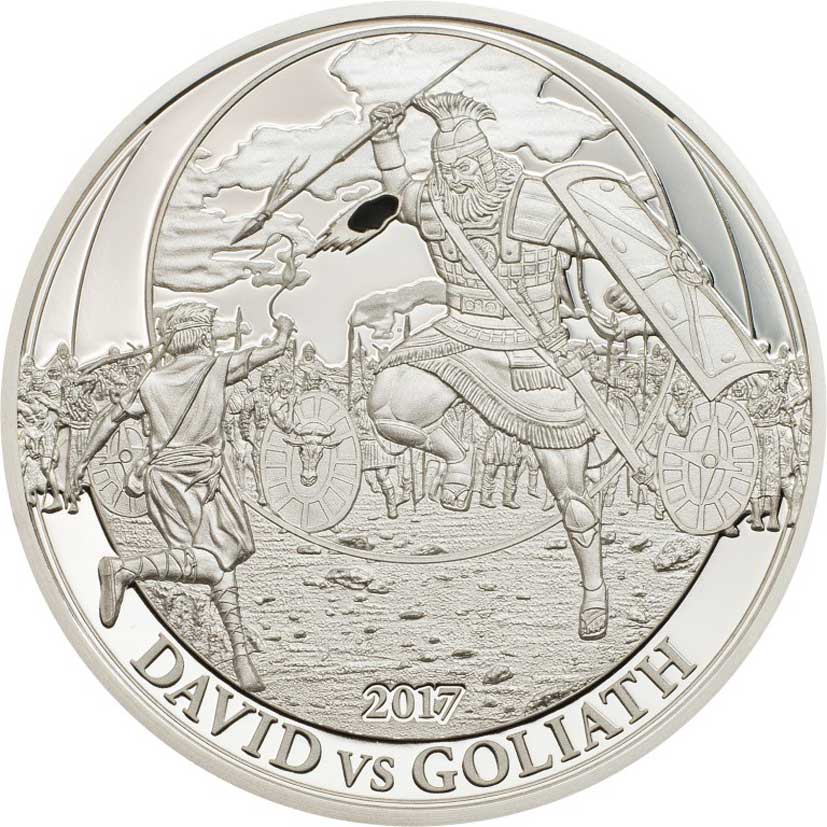
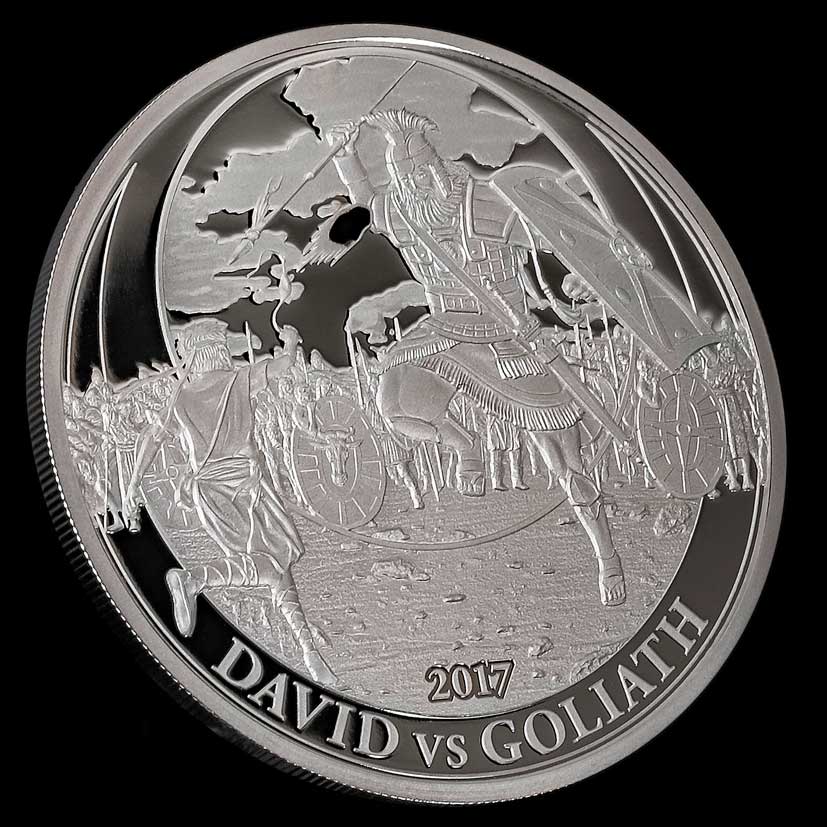





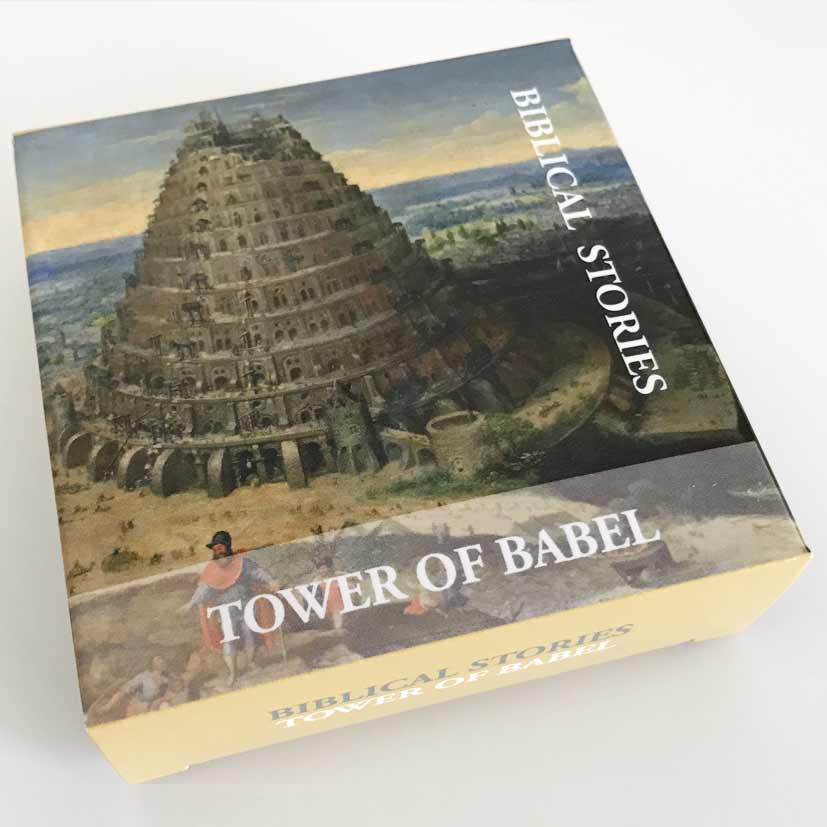
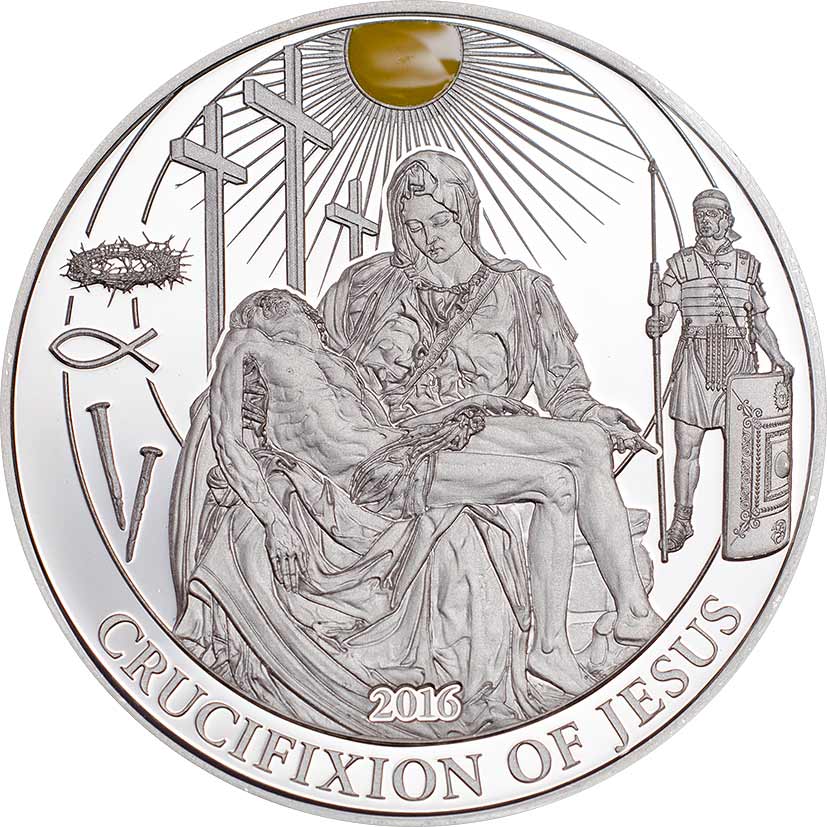
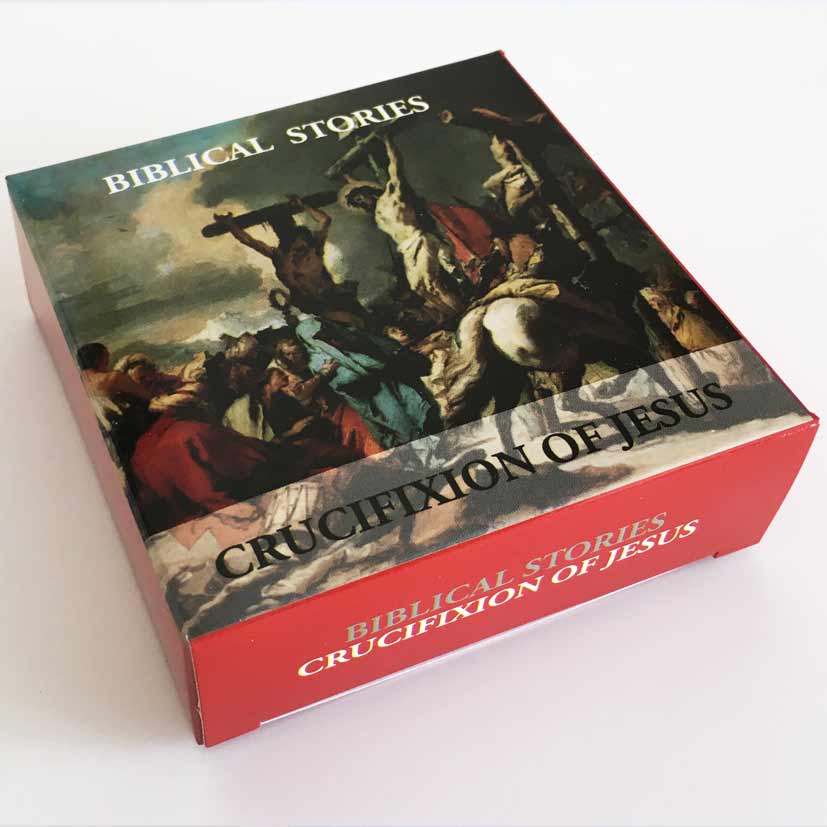

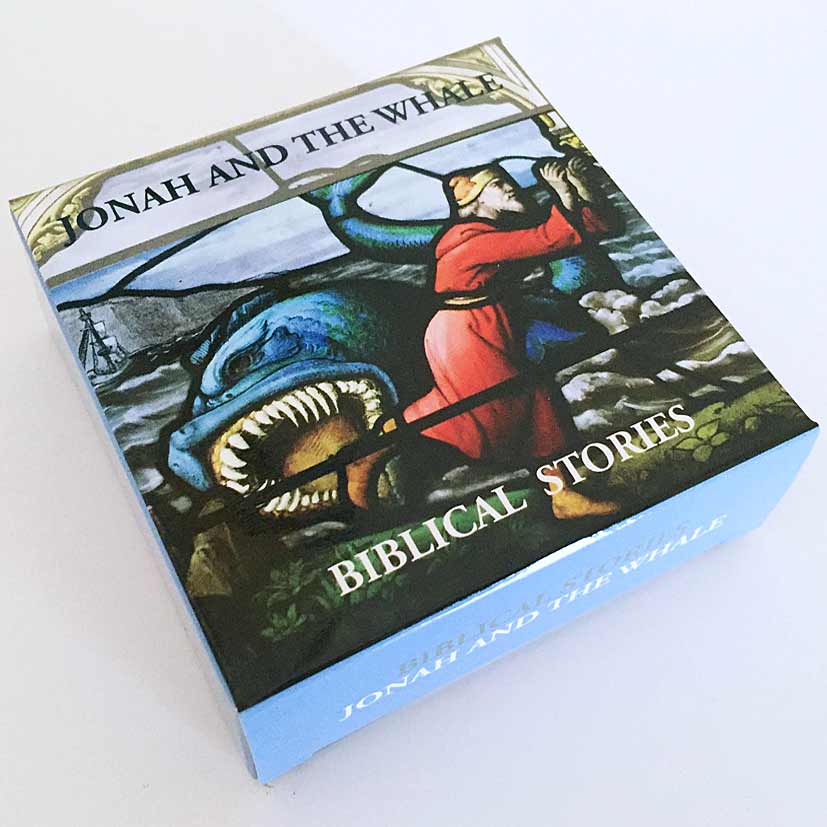
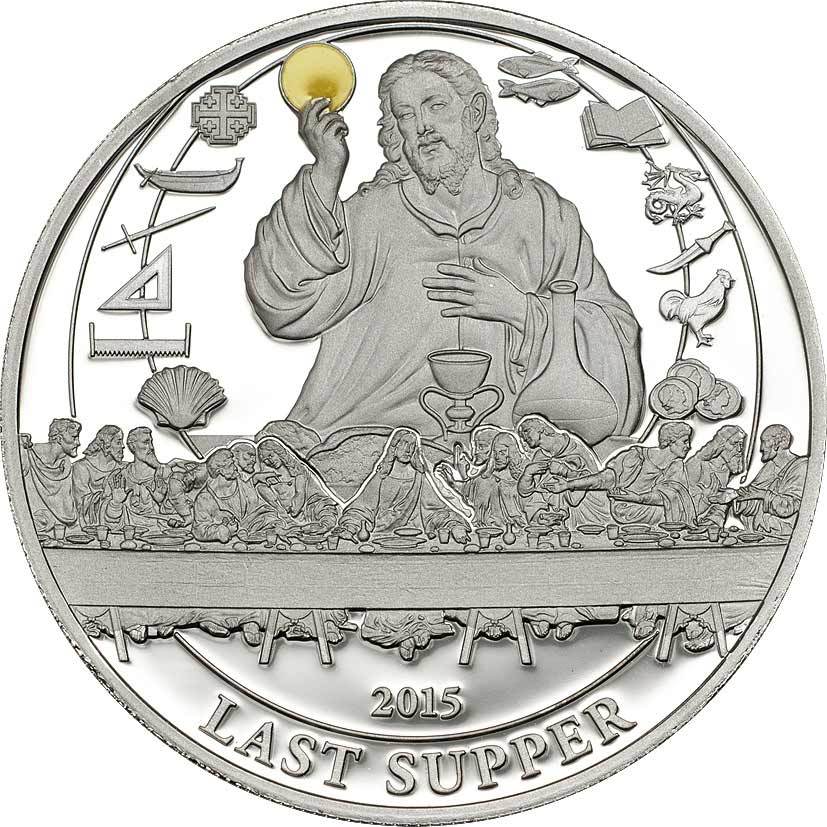
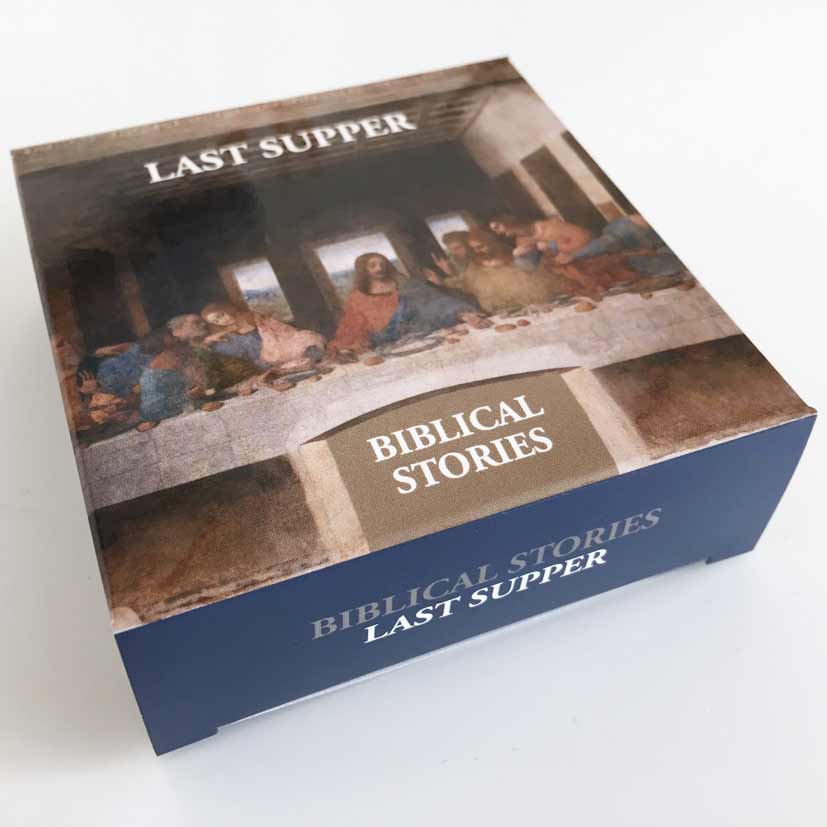
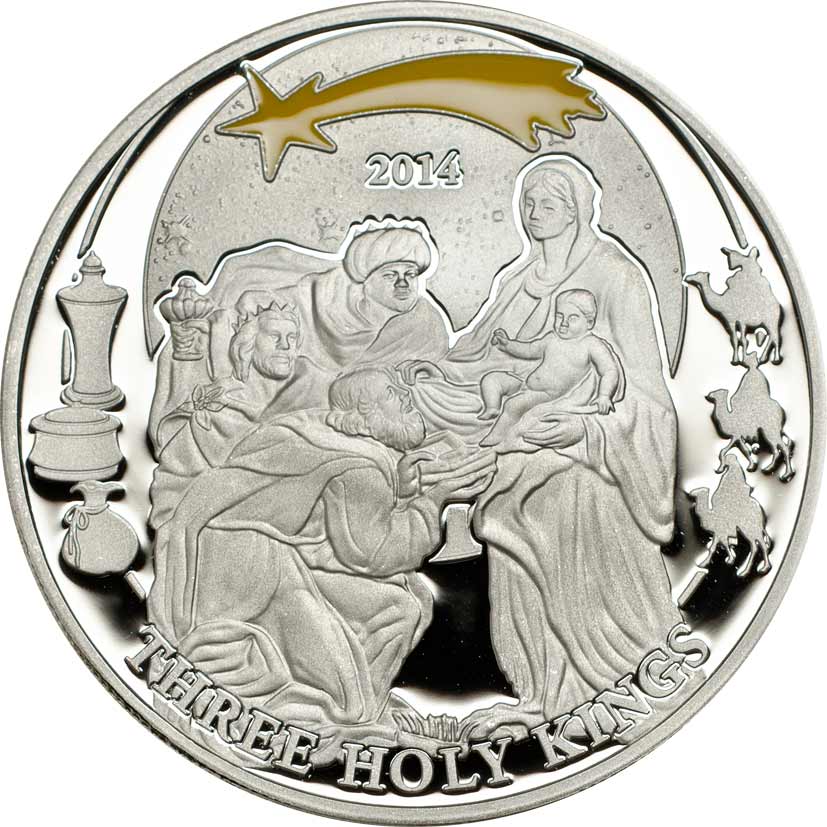

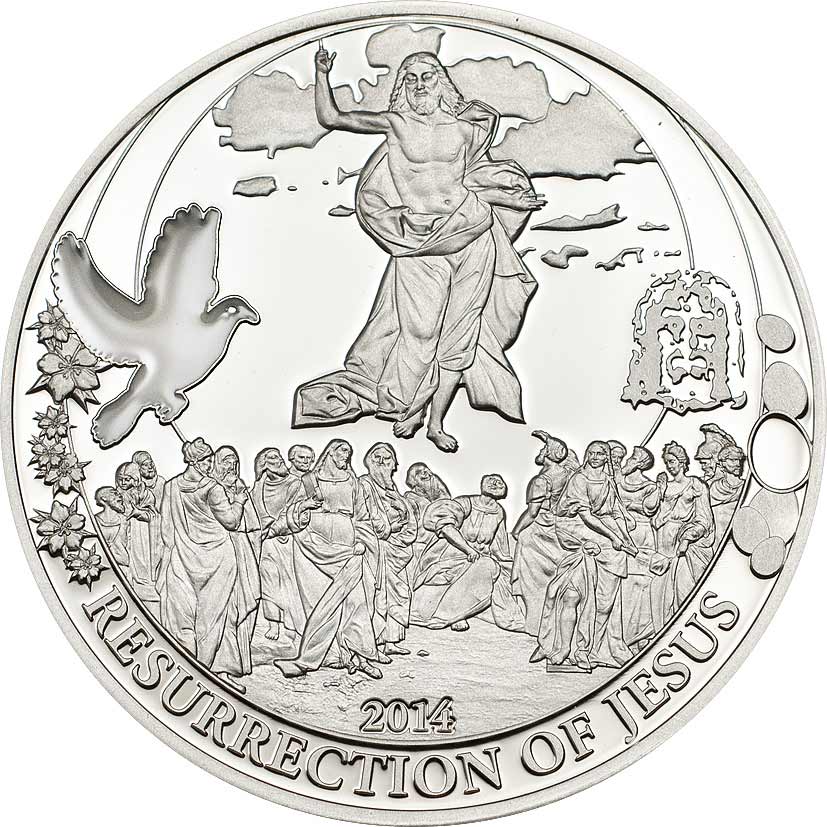


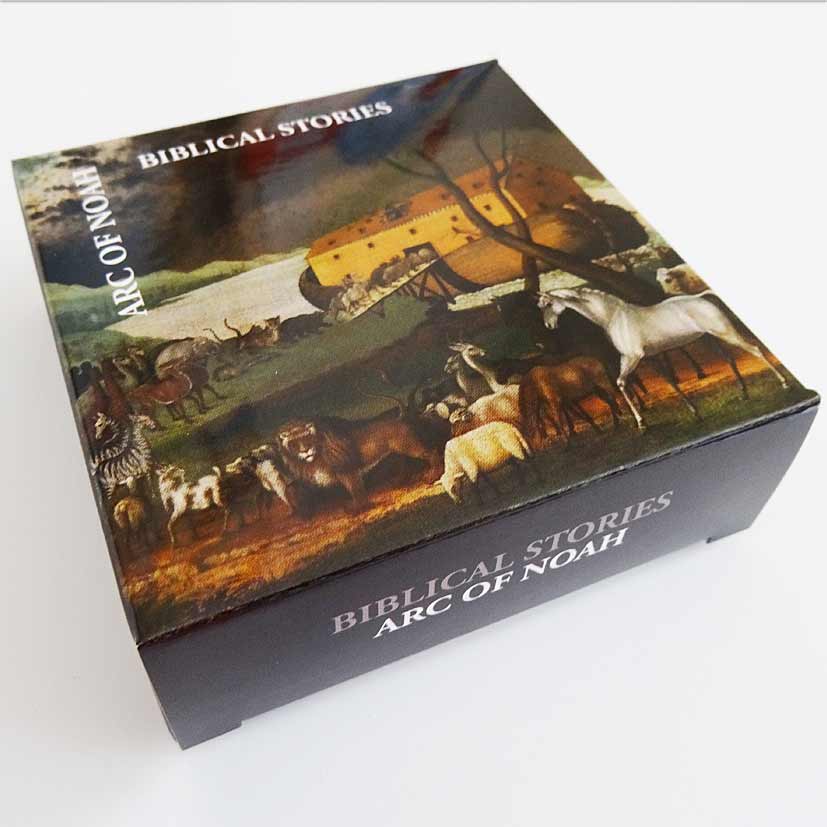

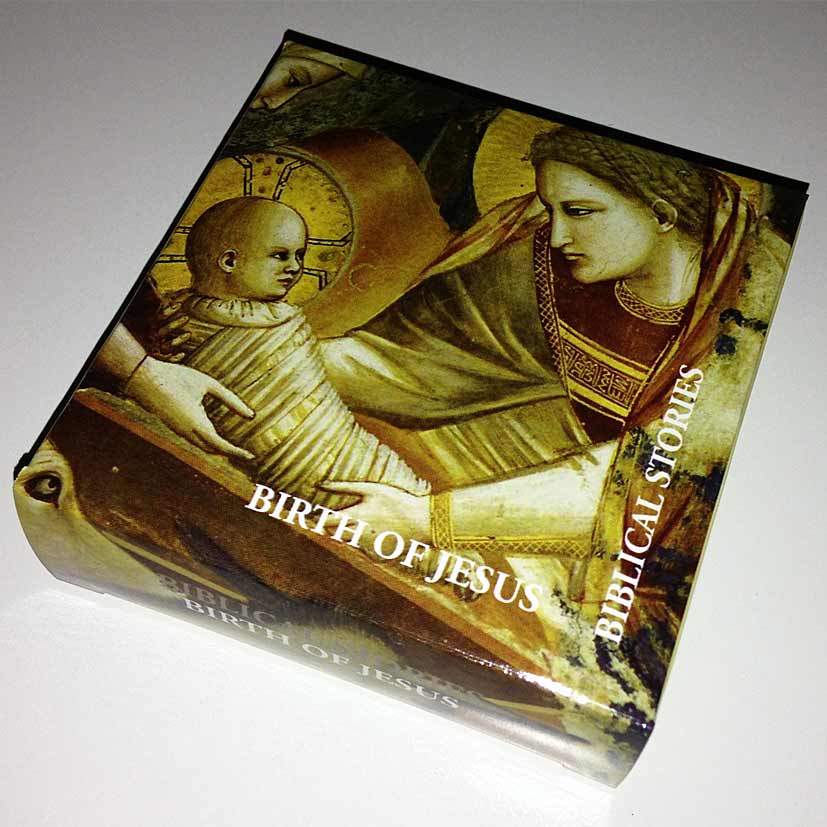


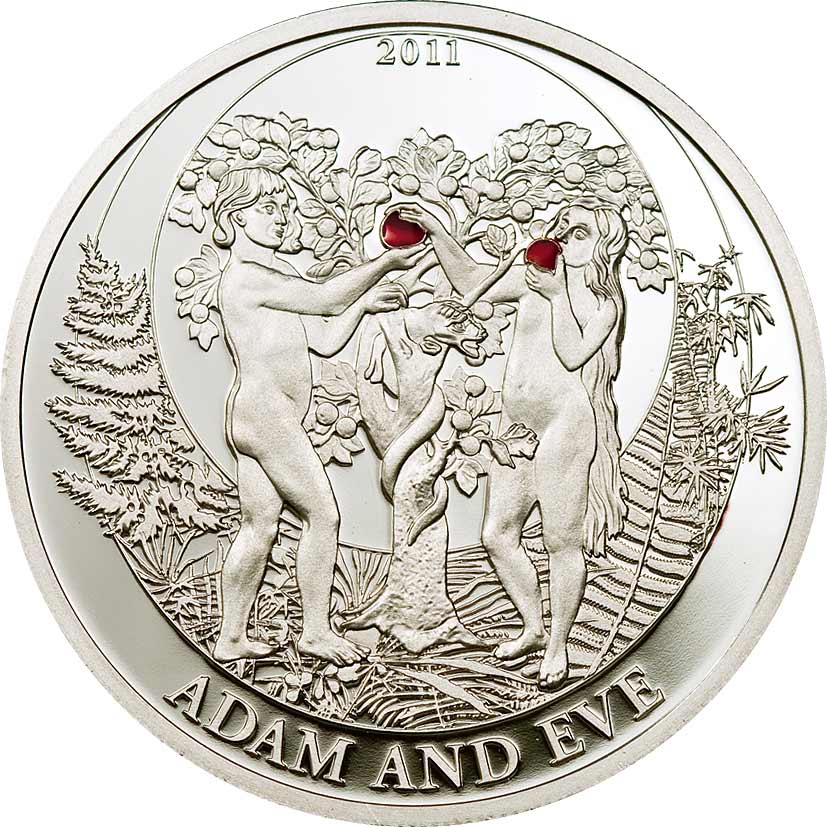

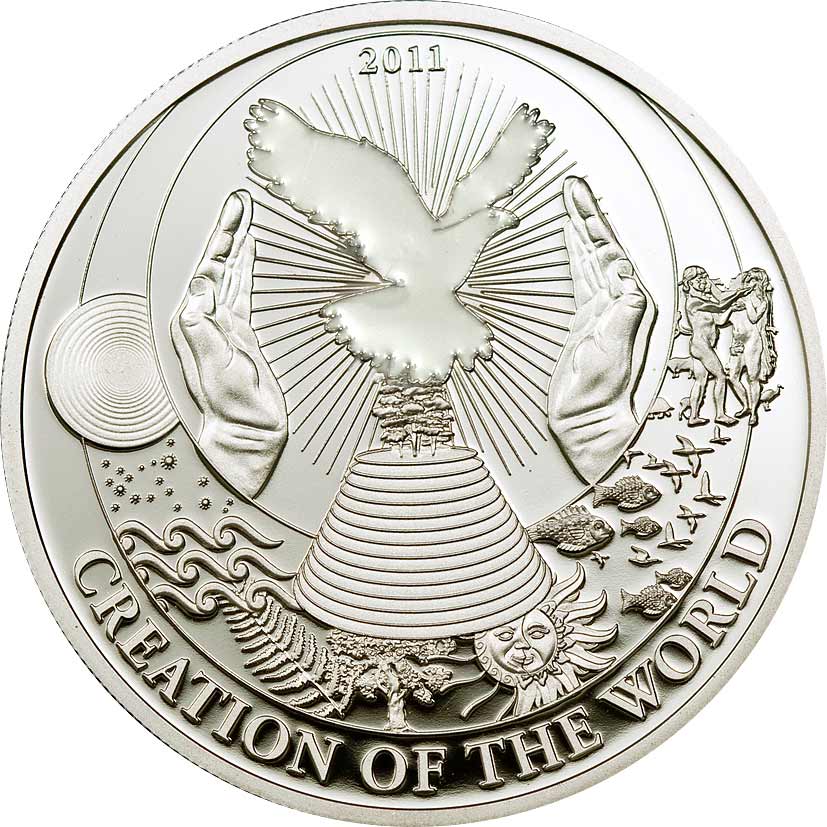

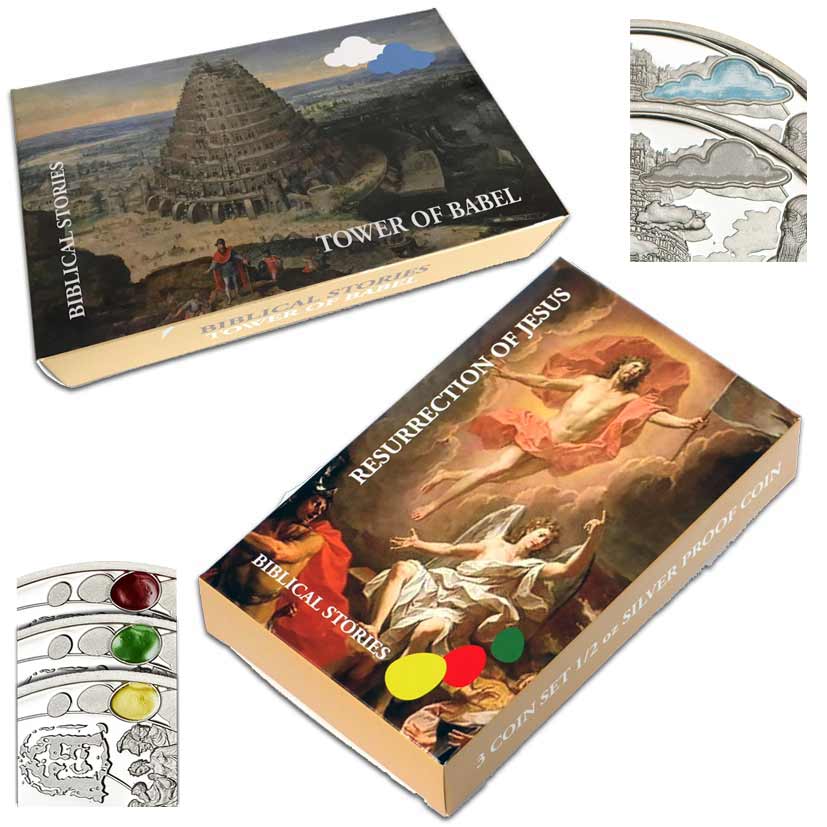
Leave A Comment